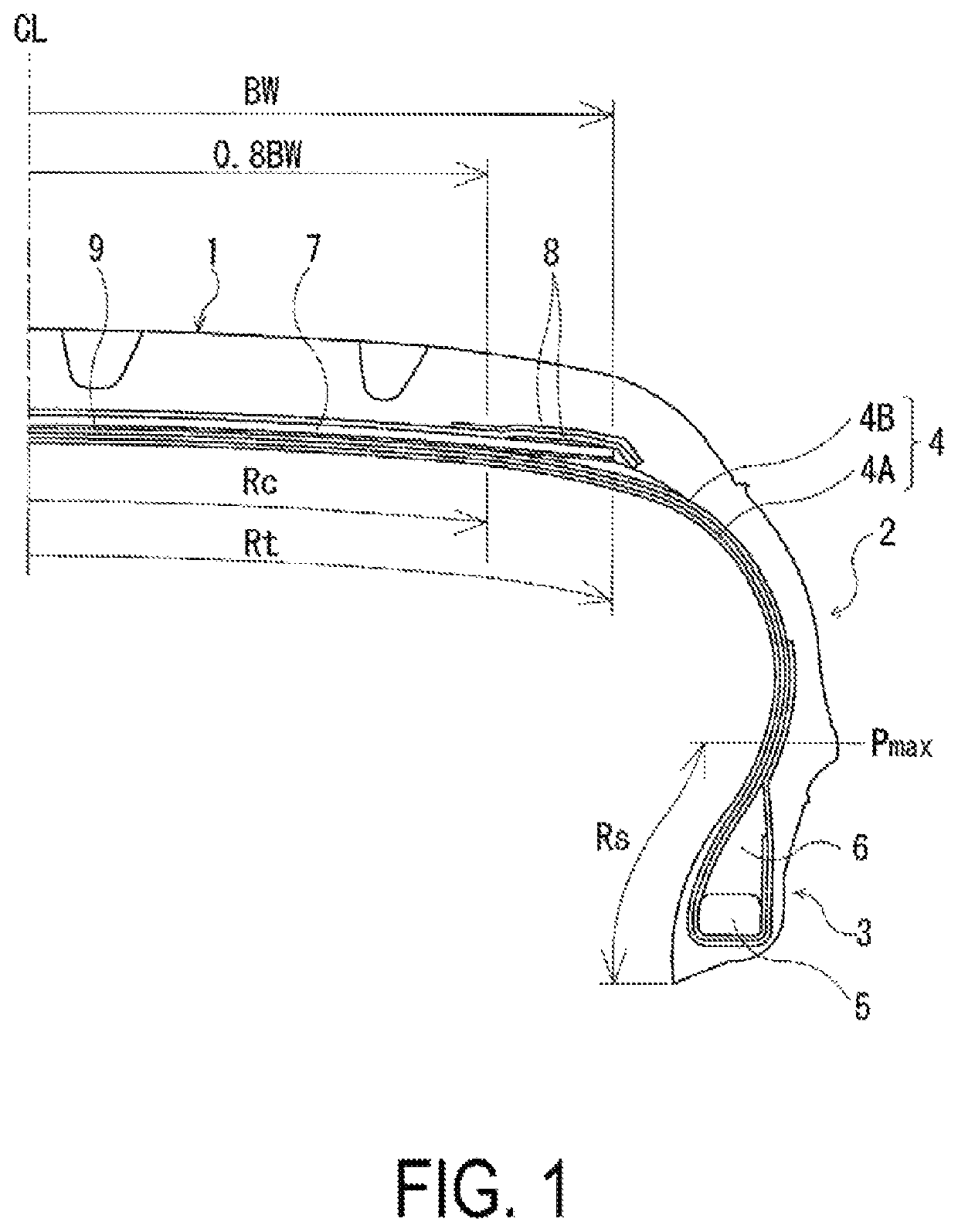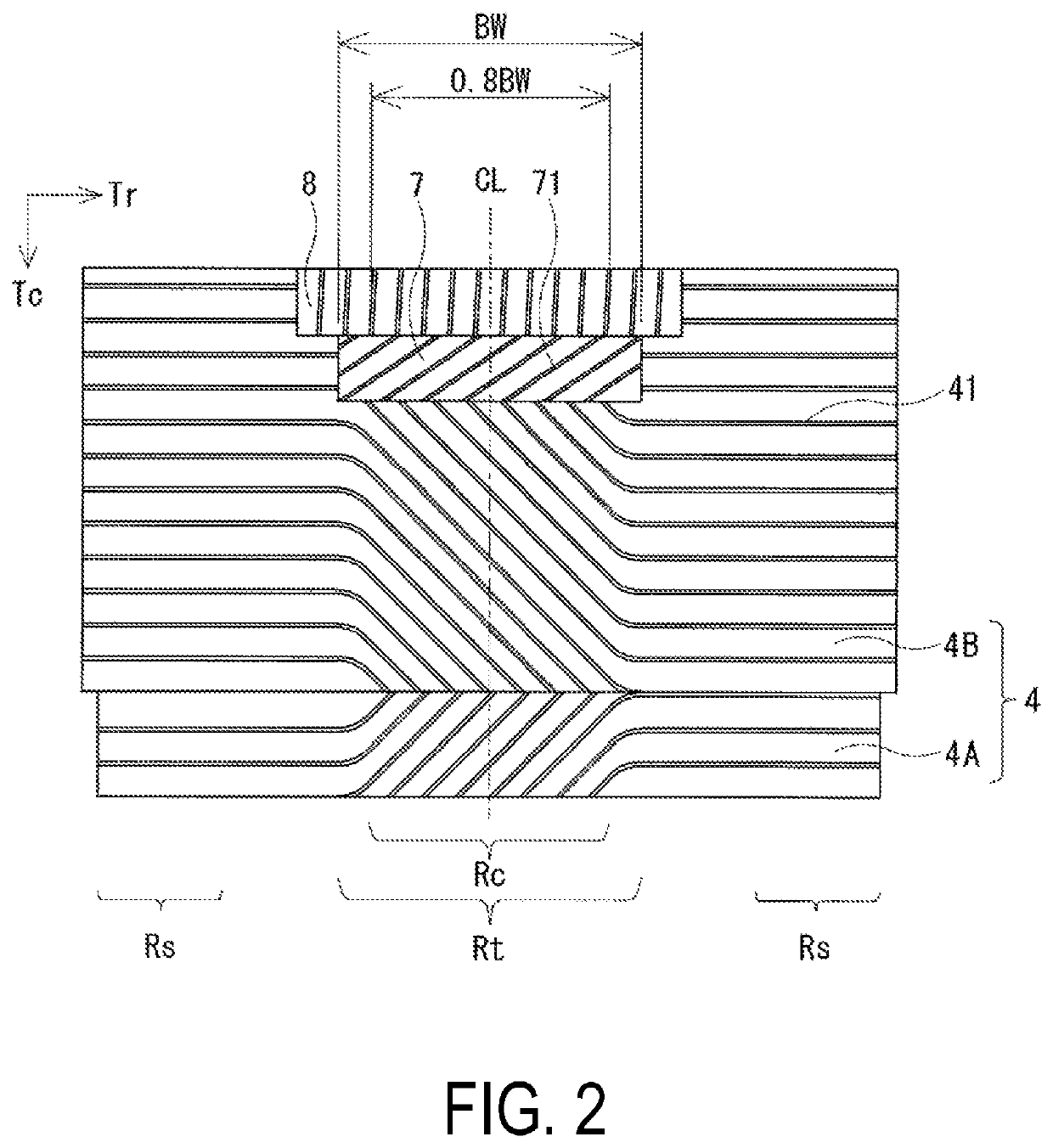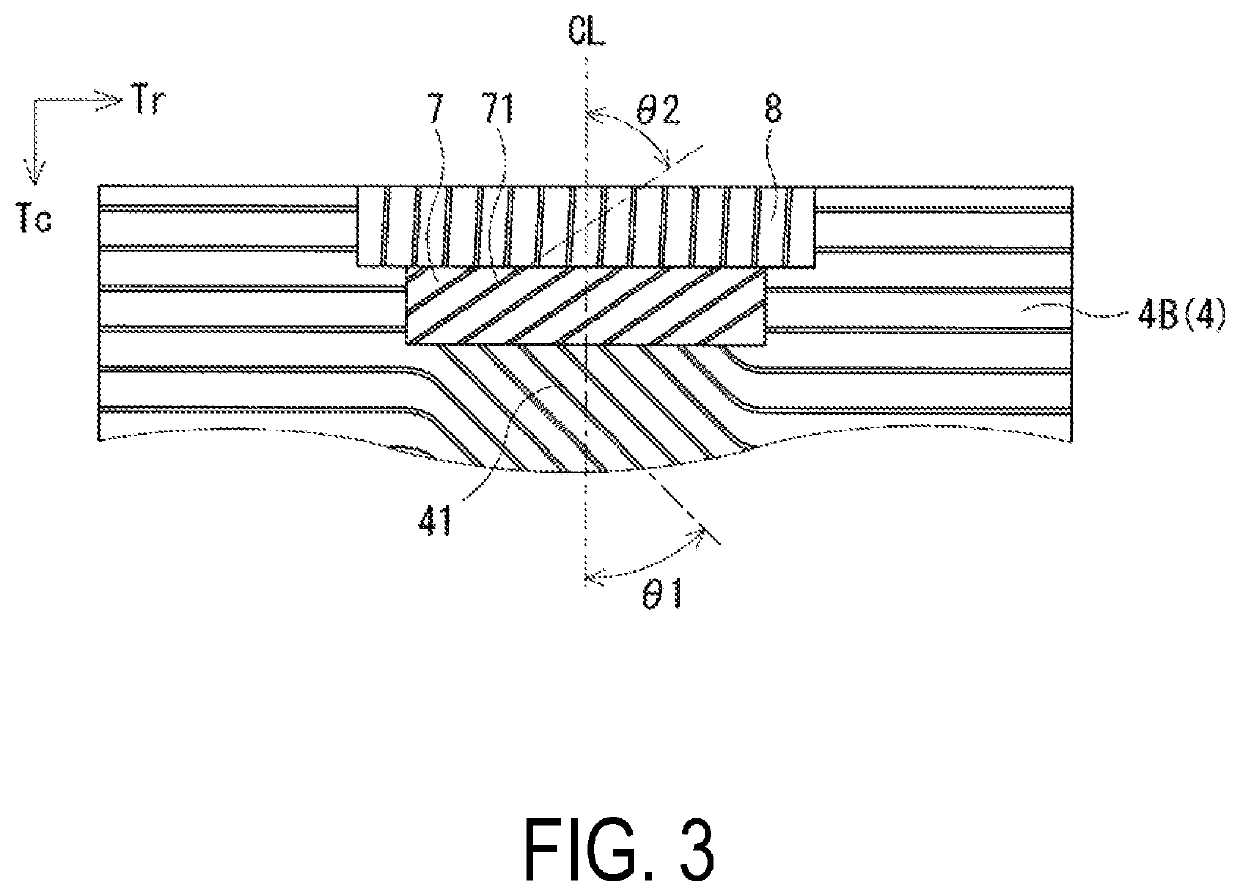Pneumatic tire
a pneumatic tire and tire technology, applied in the field of pneumatic tires, can solve the problems of insufficient steering stability and difficulty in achieving further weight reduction, and achieve the effects of suppressing the increase in carcass layer mass, reducing the weight of tires, and suppressing the degradation of rigidity and durability
- Summary
- Abstract
- Description
- Claims
- Application Information
AI Technical Summary
Benefits of technology
Problems solved by technology
Method used
Image
Examples
examples
[0029]A tire for each of Examples 1 to 4 was manufactured in the following manner. The pneumatic tire had a tire size of 235 / 40R18, and included two carcass layers, and a single belt layer. The carcass layers included a plurality of carcass cords mounted between a pair of bead portions. The belt layer was positioned on an outer peripheral side of the carcass layers of a tread portion, and included a plurality of belt cords inclined with respect to a tire circumferential direction. Also, the carcass cords forming the carcass layers were inclined with respect to the tire radial direction in a tread region, and extended along the tire radial direction in a side region. The carcass cords forming the carcass layers and the belt cords forming the belt layer cross with each other in the tread region.
[0030]In each of Examples 1 to 4, as shown in Table 1, the cord angle in the inner carcass layer in the tread central region, the cord angle in the inner carcass layer in the side region, the c...
PUM
 Login to View More
Login to View More Abstract
Description
Claims
Application Information
 Login to View More
Login to View More - R&D
- Intellectual Property
- Life Sciences
- Materials
- Tech Scout
- Unparalleled Data Quality
- Higher Quality Content
- 60% Fewer Hallucinations
Browse by: Latest US Patents, China's latest patents, Technical Efficacy Thesaurus, Application Domain, Technology Topic, Popular Technical Reports.
© 2025 PatSnap. All rights reserved.Legal|Privacy policy|Modern Slavery Act Transparency Statement|Sitemap|About US| Contact US: help@patsnap.com



